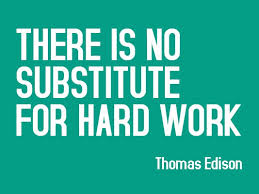College Admissions Article: Why Developing Good Relationships with Classroom Teachers is Important: Recommendation Letters: The X Factor of College Admissions:
By Justin M. Buffer, Founder, Owner, and Ed. Director of the Cambridge Learning Center of New Jersey
*************************
It is not uncommon to hear teachers mentioning in the staff room about how their students find it difficult to connect with them. This is understandable because adolescents are going through a life-changing and challenging period of their lives when they begin high school. At 14, a teenage child has to do battle with the transformation of hormones, absorbing new learning content education, and taking tough exams. And that’s just for starters and does not mention the SAT/ACT!

All the while, they often make a natural enemy with anyone in authority. Even students from cultural and religious backgrounds who are taught or urged to be deferential to authority still often set up an adversarial relationship with educators. Also, the rebellious years are here at this time, and the teacher is one of the leading candidates to be filed under the authoritarian figurehead deep within that adolescent mind. It makes the entire process of forming good relations with teachers a challenging one at best.

However, the need for good relationships is often vital for the competitive college application and admissions process. When students reach the point of this process, they will usually require a recommendation letter from at least two teachers. College admissions officers have stated to me in conversation that they place a high value on these letters or recommendation forms primarily because they are confidential. They know the students don’t have access to them (they are usually uploaded to Naviance or sent confidentially), and they like the fact they are nuanced and not “all or nothing” assessments of students. What I mean by this is the forms may ask, for example, a teacher to rank a student from 1-6 on “Work Ethic,” and also to give further details. So, a teacher can give a student a “5,” but also say that at times the student faltered with consistency in this area. Thus, the “gray” nature of these forms, which I have filled out as a public school educator in the past, gives them a sense of comfort.
The guts of this letter can ultimately help or hinder to pave the way for a student to move forward into an undergraduate, graduate, or accelerated education program. Even for students who will go straight into an apprenticeship and not a university, a letter of recommendation needs to be positive and shine a good light about those three crucial years of the students’ high school development.

Scholarship programs in the United States almost also always demand a good recommendation letter to support an application. A student needs to ask a burning question to themselves, in any year they are in high school: will a recommendation letter – if submitted today – be a favorable one? If not, the student needs to urgently act and form a good relationship with more teachers by showing emotive strength, good character, a strong work ethic, and an advanced learning-acquisition ability.
This does not mean, by the way, that students should buy their teachers gifts or provide false flattery! We teachers can see through this! But they should try and build a good rapport with their teachers and demonstrate humility and a palpable, strong work ethic.
Recommendation letters will highlight how well the teacher knows the full scope of a student. It will also note the duration. Three years is a reasonable period of time to get to know a pupil, particularly as it encompasses the profoundly transformative period that high school is. But even if a teacher only knows a student one year but knows them well, that is OK also! And a guiding principle should be that the more recent the teacher had a close relationship with a student, the better, but should not be a blanket rule that violates a common-sense decision.
A student needs to develop a good relationship with teachers because they will ultimately hold the key to their future. The recommendation letter will also include an evaluation of the student and any skills and accomplishments they will have compiled over the three years. Examples of these accomplishments and strengths will almost certainly be included in the letter of recommendation.
“Relationships, relationships, relationships,” one Fortune 500 CEO said, was the key to lasting success. If she is correct, then high school is the perfect place to start practicing and integrating the truth of this aphorism.
*******************************************
Mr. Justin M. Buffer is a professional educator, consultant, and college admissions planner. He is the owner, founder, and director of the Cambridge Learning Center of New Jersey, that does in-person and online tutoring for SAT/ACT, K-12 Subjects (All), MCAT, GRE, and more!




